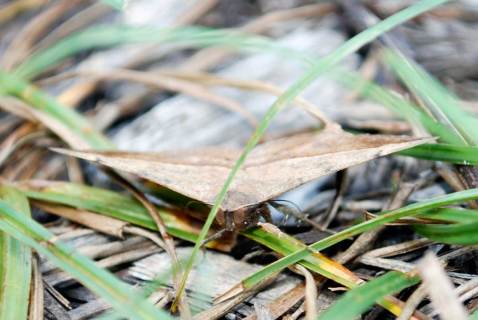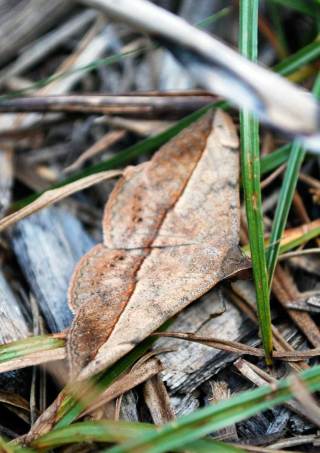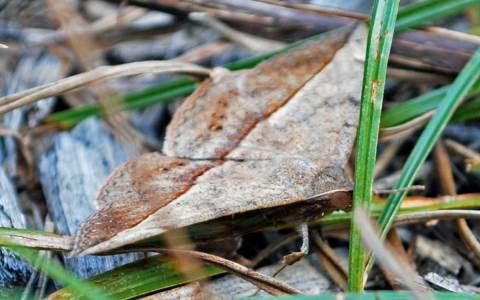I was cleaning the pool deck the other day and noticed a very odd moth flying around trying to get away from the concrete and glass of the built environment and back into the natural world where it would be much more at home. As you can see, it made it:
And it has a very impressive cryptic camouflage, looking for all the world like a dead leaf; the picture above shows one of the few angles where you might even begin to suspect that it’s not actually a dropped leaf. It has an intricate network of “veins” and even a “midrib” stripe, as this dorsal view shows:
This moth goes by the common name Velvetleaf caterpillar moth. Its taxonomic name, Anticarsia gemmatalis is rather interesting. The specific epithet comes from the Latin gemma, bud, and talis, ankle. You can see how descriptive that name is in the detail shot here:
Kind of reminds me of the good old leaf-footed bug, Chondrocera laticornis.
The genus name, Anticarsia, is a bit more puzzling. Anti, of course, means “against,” “opposed to,” while carsios is Greek for “crosswise.” I’m not sure whether we’re really supposed to translate the genus name as “anti-crosswise,” but it’s interesting to think about…
The cryptic coloration is pretty important to this moth because it’s one of the most economically important soybean pests in Florida and the Southeast. According to the Featured Creatures website run by UF/IFAS,
Infestations of the caterpillar occur in the late summer months and can cause great damage to soybean and other legume crops if not managed. The caterpillar is able to strip fields of soybean foliage in five to seven days
So I guess it’s a good thing my little 1/4 acre doesn’t rely too heavily on soybean exports for its modest income.



